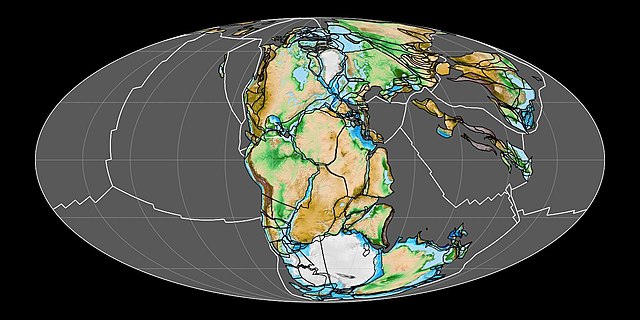The Farallon Plate was an ancient oceanic plate. It formed one of the three main plates of Panthalassa, alongside the Izanagi Plate and the Phoenix Plate, which were connected by a triple junction. The Farallon Plate began subducting under the west coast of the North American Plate—then located in modern Utah—as Pangaea broke apart and after the formation of the Pacific Plate at the centre of the triple junction during the Early Jurassic. It is named for the Farallon Islands, which are located just west of San Francisco, California.
Formation of the Juan de Fuca (including Explorer and Gorda) and Cocos plates (including Rivera) and of the San Andreas Fault from the Farallon plate
A software model by NASA of the remnants of the Farallon Plate, deep in Earth's mantle
Panthalassa, also known as the Panthalassic Ocean or Panthalassan Ocean, was the vast superocean that encompassed planet Earth and surrounded the supercontinent Pangaea, the latest in a series of supercontinents in the history of Earth. During the Paleozoic–Mesozoic transition, the ocean occupied almost 70% of Earth's surface, with the supercontinent Pangaea taking up less than half. The original, ancient ocean floor has now completely disappeared because of the continuous subduction along the continental margins on its circumference. Panthalassa is also referred to as the Paleo-Pacific or Proto-Pacific because the Pacific Ocean is a direct continuation of Panthalassa.
The Panthalassa superocean 250 million years ago
The supercontinent Pangaea in the early Mesozoic (at 200 Ma) surrounded by Panthalassa.
The Pacific Plate began forming when the triple junction at the center of Panthalassa destabilized about 190 million years ago.





